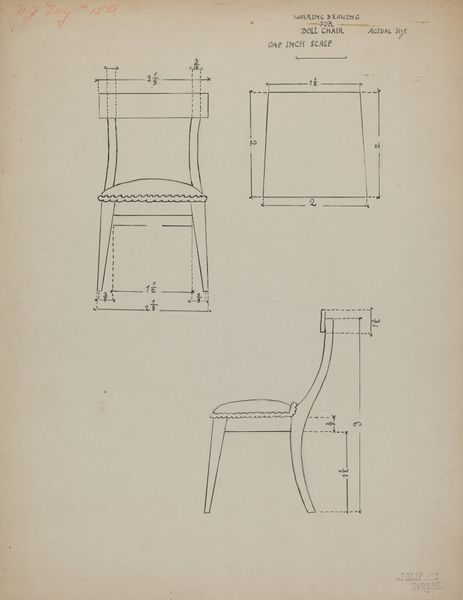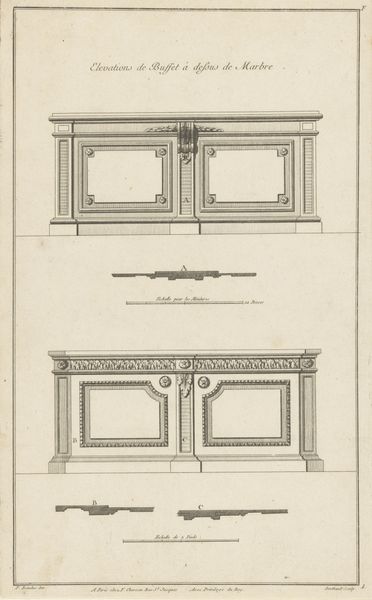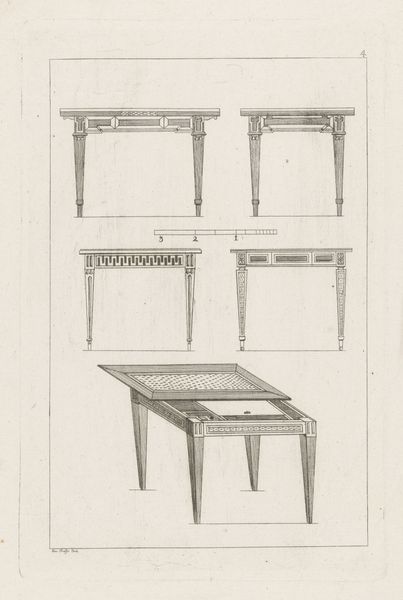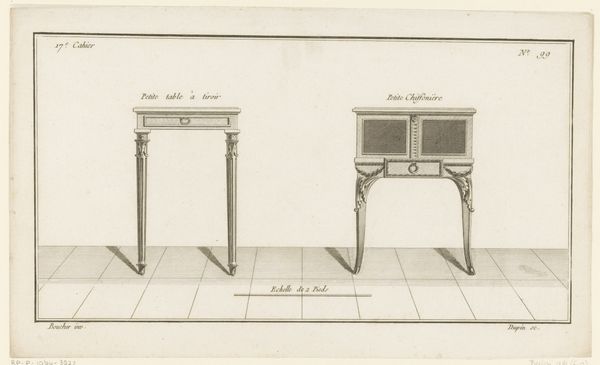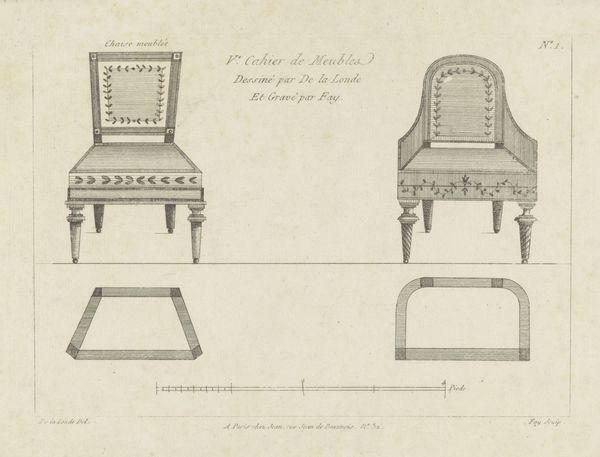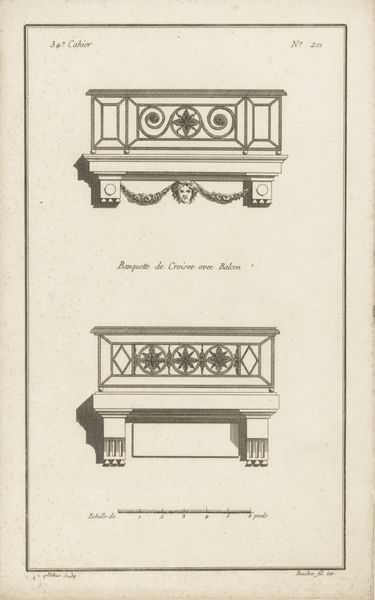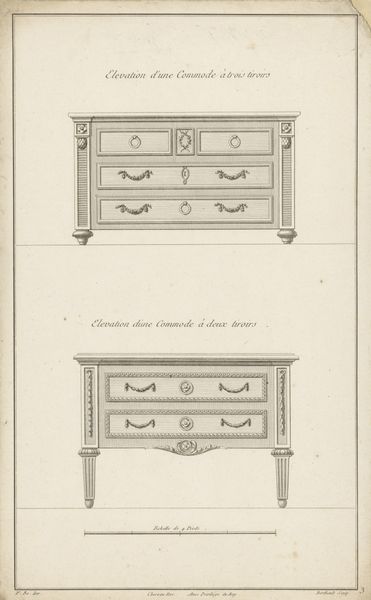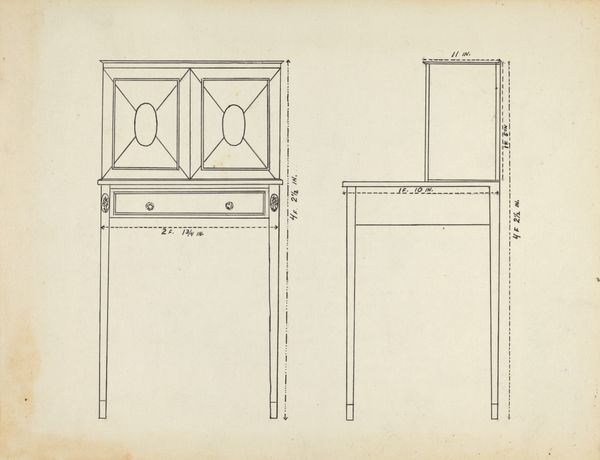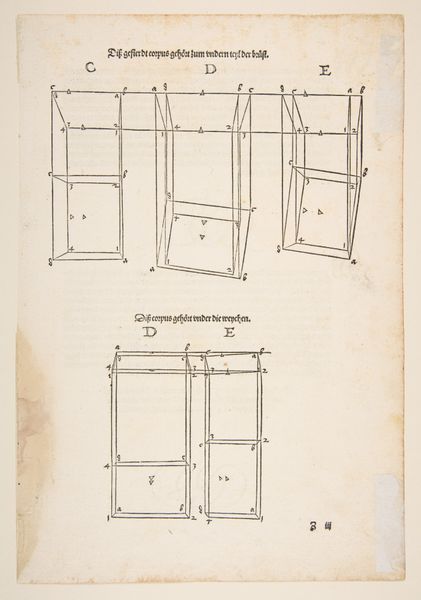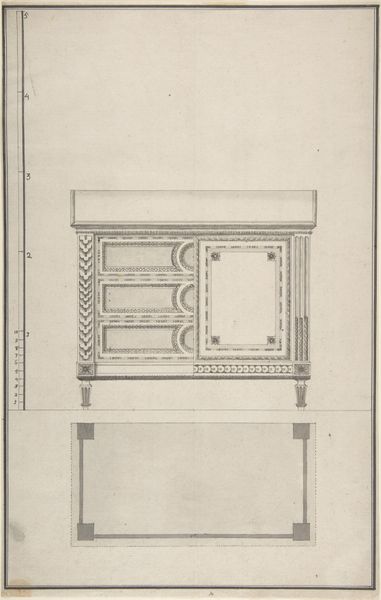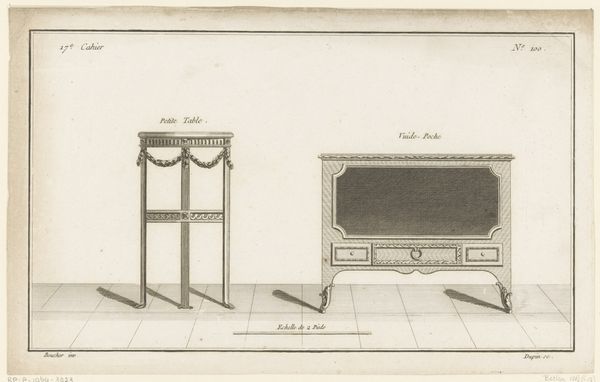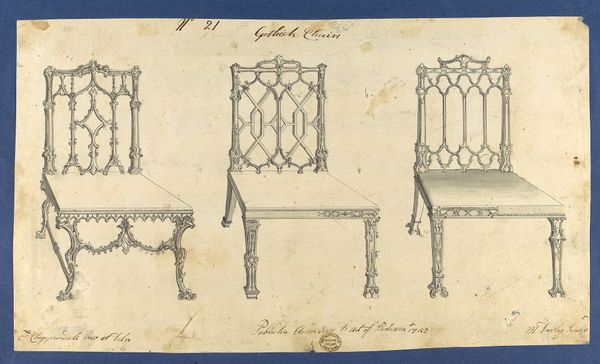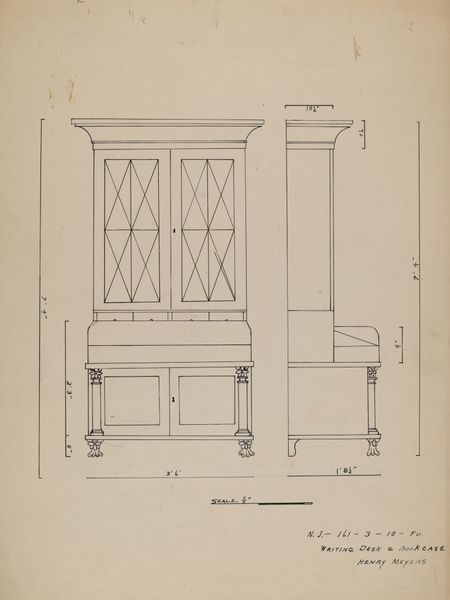
London Chair-Makers' and Carvers' Book of Prices, for Workmanship... 1807
0:00
0:00
drawing, print, paper, ink, engraving
#
drawing
#
ink paper printed
#
parchment
# print
#
book
#
paper
#
ink
#
geometric
#
line
#
academic-art
#
engraving
Dimensions: 10 13/16 x 8 7/8 x 1 7/8 in. (27.5 x 22.5 x 4.8 cm)
Copyright: Public Domain
Curator: Well, hello there. This detailed print, etched with meticulous precision, is from "London Chair-Makers' and Carvers' Book of Prices, for Workmanship..." dating back to 1807. It's currently residing here at the Metropolitan Museum of Art. Editor: Oh, my, isn’t that… practical? I mean, it's got a beautiful austerity about it, like a diagram for seating enlightenment. Each design feels so contained, a miniature manifesto on the geometry of repose. Curator: Exactly! These aren’t just random sketches. They're part of a price book. They dictated the costs associated with labor, outlining standards and expected profits of each element, reflecting the early industrial period’s formalization of craft and skill. Editor: That explains the clinical layout, almost scientific. Look at Figure 5, though! The curve of the backrest seems a rebellious flirt amongst all those straight lines, a tiny, upholstered Dionysus sneaking into a stoic board meeting. Curator: It illustrates a key transition. We're seeing the visual language evolving, yet held back by function and regulation. Note the use of "x" motifs – they recur, perhaps symbolizing both strength and flexibility in construction, essential traits in the chair maker’s pursuit. Editor: Symbols repeating like cultural DNA! That "x"—a crossroads, or a structural necessity? Or both, layered up? And consider those numbers! "No. 1", "No. 2" It's the dawning of mass production, robbing each creation of singularity. Curator: A fascinating point. While on the surface they show progression, they are simultaneously shackling the maker to systematization of price, thereby impacting customization and creativity. It shows an internal struggle reflected in what seems quite objective illustrations. Editor: True, like poetry chained to accounting ledgers! Yet in its attempt at objective clarity, it ends up becoming a visual artifact rife with sociological suggestion, don't you think? Almost making it more interesting. Curator: Absolutely, and these drawings do invite us to ponder questions about labor, craft, and the evolving aesthetics that underpinned the decorative arts of the time. It is remarkable how simple forms and outlines encapsulate this moment so eloquently. Editor: You know, seeing the potential hidden within these chairs now, maybe sitting here a little longer isn’t so bad after all. I can dream in right angles!
Comments
No comments
Be the first to comment and join the conversation on the ultimate creative platform.
